Did you just utter an incredulous “What?” Or raise your eyebrow and say, “The Incas planted water? Yeah right.” Yes, I thought the same thing. I held a straight face as our host told us of the marvel of the Incas. Inwardly, I wondered about this legend and the story behind it. As the story unfolded, however, I found myself believing that the Incas actually did plant water.
Cusco: The Ancient Capital of the Incas
During our time here in Peru’s Sacred Valley, the ancient center of the Incan empire, I have grown more and more impressed with their obvious advancement and knowledge of their ecological system. They were ingenious in their domination of nature without destroying it. In fact, their intricate canals and irrigation systems helped preserve the environment even while producing all the crops they needed. Many of these sites in the Sacred Valley even predate the Incas. The advancement of these ancient cultures is simply amazing.

Architecture
Their architecture still stands today, five centuries later, even though the Spaniards tried to destroy it. This is a testament to their precision and understanding of the climate and elements of this region.There were civilizations before the Incas. Many of them were believed to have died off or moved because of climate change.
The Incas understood that climate and adapted. They then became a great empire. Can you think of any modern society today that is building something that could remain five centuries after the civilization has passed away?

Unfortunately, there is much we don’t know about the Incas. A great deal of their history is lost and we are left with only artifacts and lore. The ancient quipu system of knots in a string may have been their written records of superstitions, history, and knowledge1 but we lack the information today to interpret them.

There is much speculation about the purpose of many structures. Sacsayhuaman (jokingly pronounced “sexy woman”, in a weird Jamaican accent), was long believed to be a stronghold. Word of mouth from the locals, however, believe it to be an ancient research center. Seeing what they have produced, this is not a far stretch of the imagination, given that they conducted successful brain surgeries.2 The Incas also cultivated over 3,000 varieties of potatoes3 and had rich resources of food. They were truly advanced.
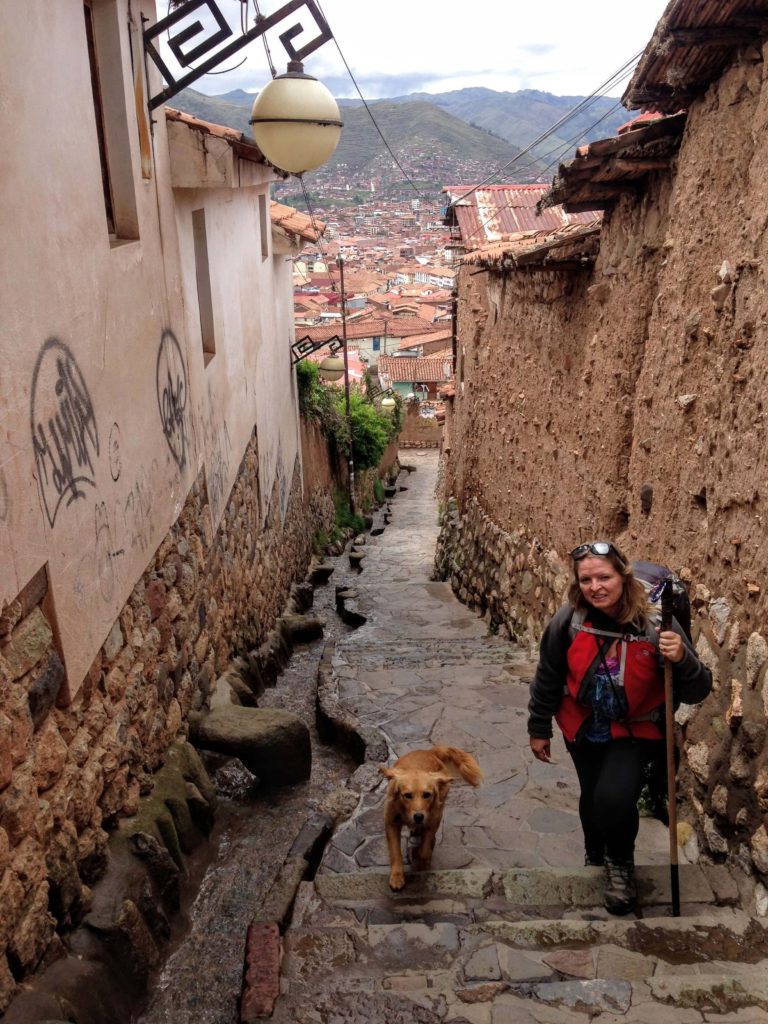
Larger than the Roman Empire
The Incas took over and began to rule many of the tribes all over western South America from Colombia and down into now modern-day Chile. They were an empire larger than ancient Rome and even had an extensive road system.
The Incas conquered other areas peacefully in many cases4. Sending spies to research each tribe, they would then send messengers with a tantalizing offer to join them. They promised prosperity and safety under Inca rule. Nonetheless, not all tribes joined peacefully and some maintained long-standing resentment of their dominion.
In fact, the Quechua leader that we stayed with in Otavalo, Ecuador (read of our time with him here) spoke of how his nation fought integration and maintained their own ways under Inca rule. They only began losing ground just before the Spanish conquest.
Architecture
Machu Picchu
Many things have amazed me here. The architecture is definitely one. Without a doubt, Machu Picchu is a highlight of the area (read our experience in Machu Picchu here), but it is only one of many ancient ruins in this area.
Pisac
Pisac was another beautiful experience. As we climbed a stairway built five centuries ago my respect for their accomplishments grew. The stairway was not only functional, it was beautiful and has lasted for ages. There is obviously some reconstruction, but very little compared to the time that has passed. The stairways that look precarious were actually not that difficult to scale as the jagged stone wall creates handholds like a railing would. Not only were they functional they were artistic and created a design on the side of the terraces from above.
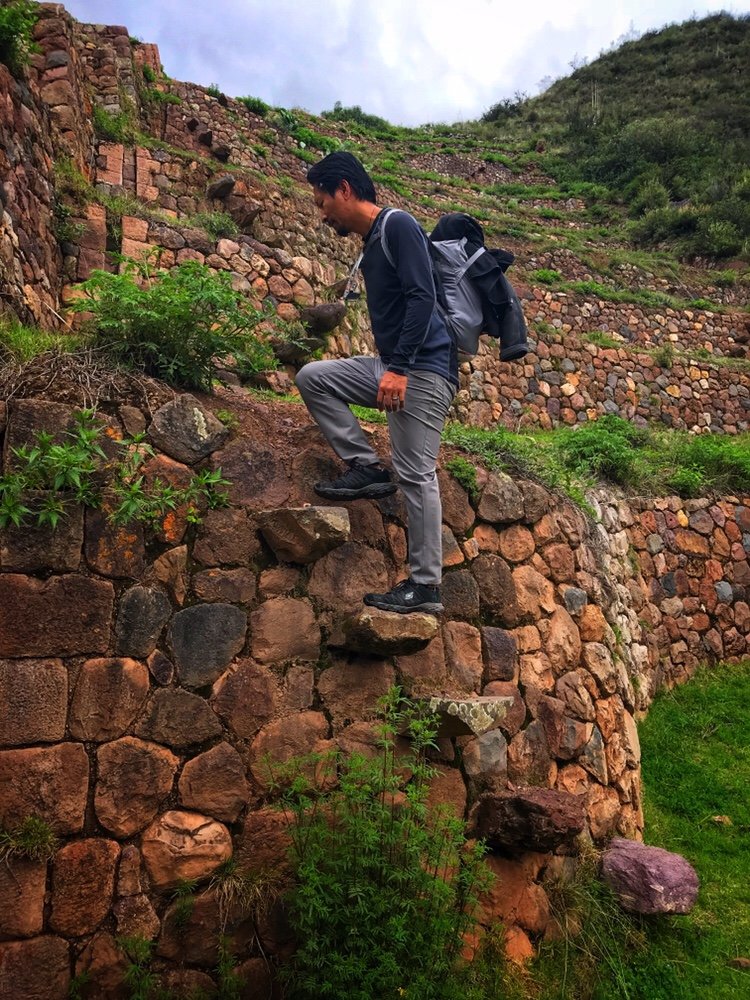
The more I learn the more questions I have. How did they move these massive stones? There are five ancient monoliths in Ollantaytambo that are 50 tons each! Not to mention the 200-ton stones at Sacsayhaman transported in from Ecuador.
How did they fit them so precisely together? Not even a sheet of paper can be slid between these massive rocks that form their temples and homes. I’ve also learned that each stone is curved on the bottom to fit perfectly into the concave stones below it5, rather than flatly sitting atop each other. This architectural ingenuity helps protect the structures against earthquakes.
Agriculture of Wonder
The terraces found all over the Sacred Valley were built in such a way to increase land available for agriculture. The impossibly steep mountains were transformed into agricultural gardens. Even the stairways were built without taking up any precious planting space.

The terraces utilize and conserve water resources. The gravel and stone at the base of each terrace prevent flooding during heavy rains. The large stones placed to aid with controlled water flow protect against landslides.
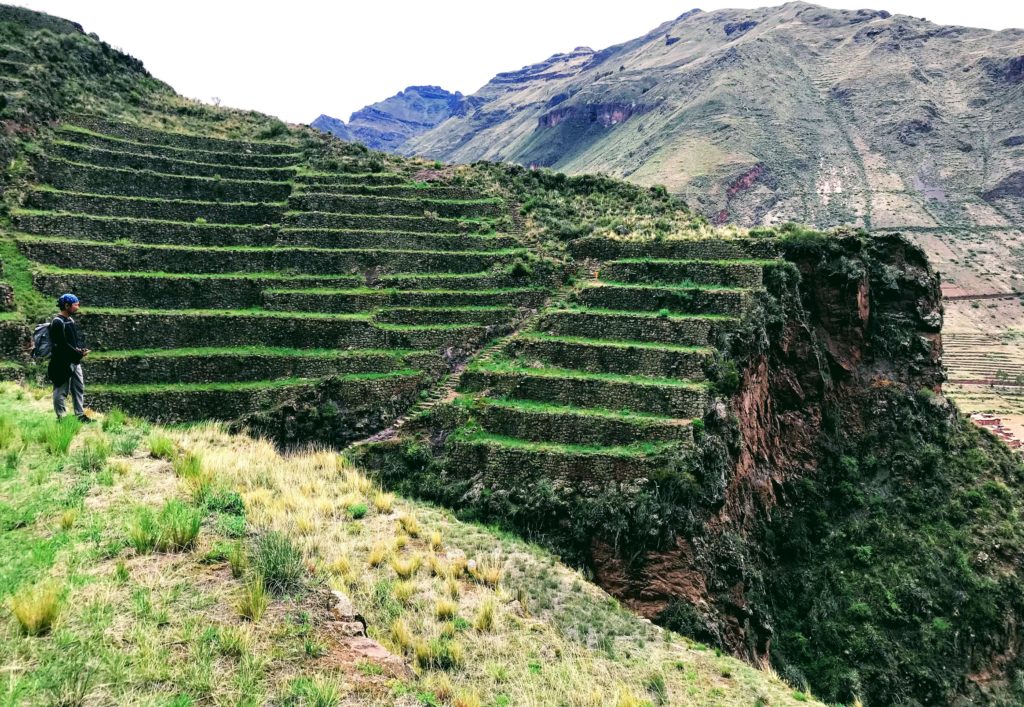
The elevation differences between the base of the terrace system and the top provided multiple climate systems for many different crops. Soil for each terrace was selected and brought in based on the needs of the vegetation. The structure of the stones protect the more delicate crops as they gathered heat from the sun during the day to keep the roots warm during the frigid nights.
The circular terraces at Moray have many in wonder at the foresight in its construction. Despite the heavy rain seasons in the area it never floods.
Canal Systems
Lima, the capital city of Peru, is a desert city plagued with devastating floods and landslides during the rainy season. During the remaining seven months of the year, the city struggles with drought and water shortages. The city has considered refurbishing the ancient Wari canal system to alleviate their constant flooding and drought cycle6.
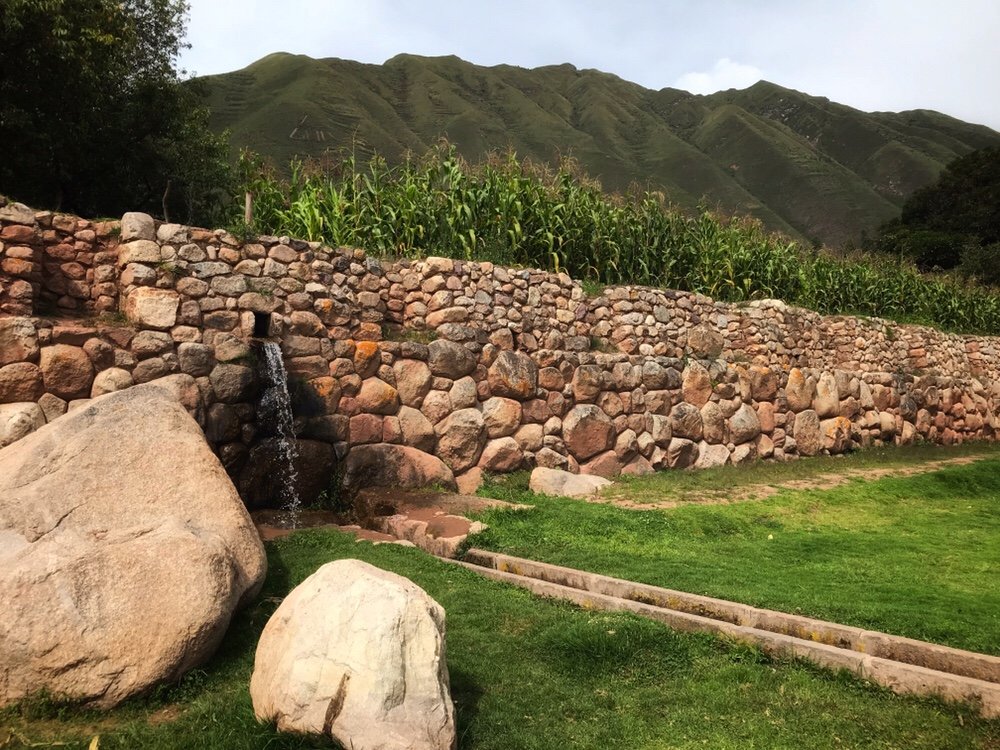
The Wari canals predate the Incas by centuries. This underground system seems to divert flood waters directing them to infiltrate rocks that feed undergrown springs. This delays the water flow and creates a consistent source of water year round. The system is still under research, but if revived, it could alleviate their water issues and in the long run, it would be cheaper than trying to build their own solution.
Tipón: Ancient Water Temple
Trin and I sat around the table with Elizabeth and Rene, our hosts in the Sacred Valley. They had brought in an evening snack of morada for us all to enjoy as we talked. We listened intently as Elizabeth spoke about eternal water springs, age-old festivals, ancient sun temples, and the thousand varieties of potatoes. She has lived in this area her entire life. Her daughter is an archaeologist here and they are continually uncovering ancient findings.

Elizabeth was telling us about Tipón and the ancient water temple surrounded by terraces perfectly aligned at right angles. Many have puzzled over how the water constantly flows in Tipón, even today.
“The Incas planted water,” she said.
She explained the Incas planted trees on the hillsides surrounding Tipon. She said it was only recently discovered that this tree collects water from the air. It is believed that each tree can produce 8-12 liters of water each day to form an underground spring.
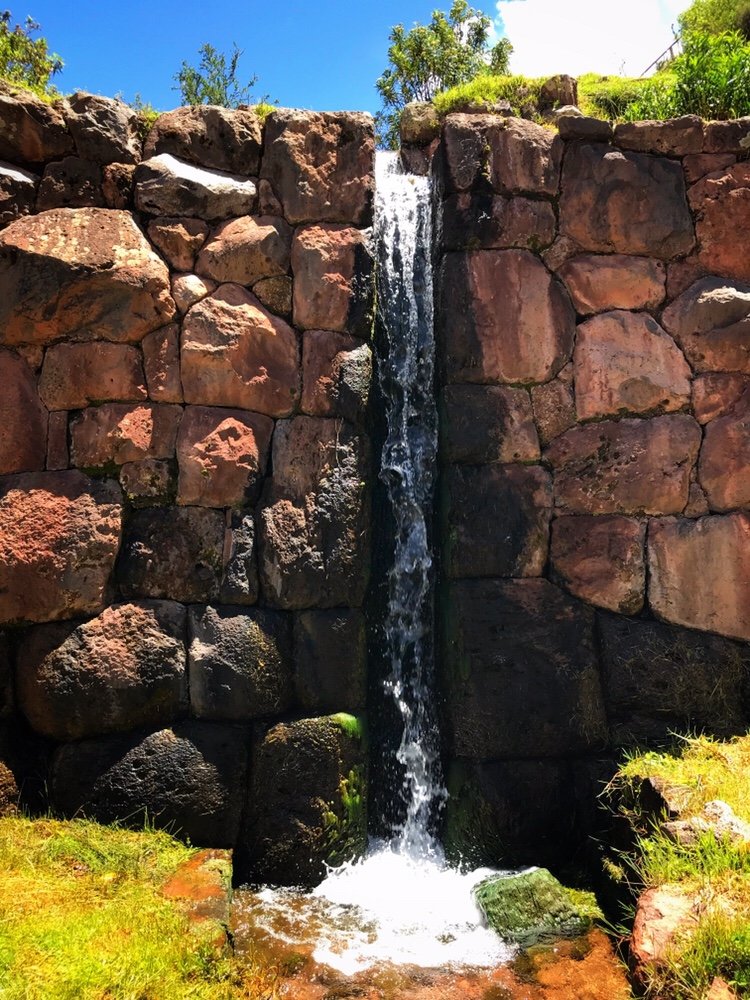
Planting Water
So, did the Incas plant water? I’ve not found anything to substantiate this, but the story of the ancient water temple sounds plausible. Seeing their ingenious use of nature in this entire area, I would not be surprised if this were true. We may never know if they simply found these underground springs and utilized them or if they planted trees to help sustain them. We are left to be amazed and bask in the beauty they left behind.
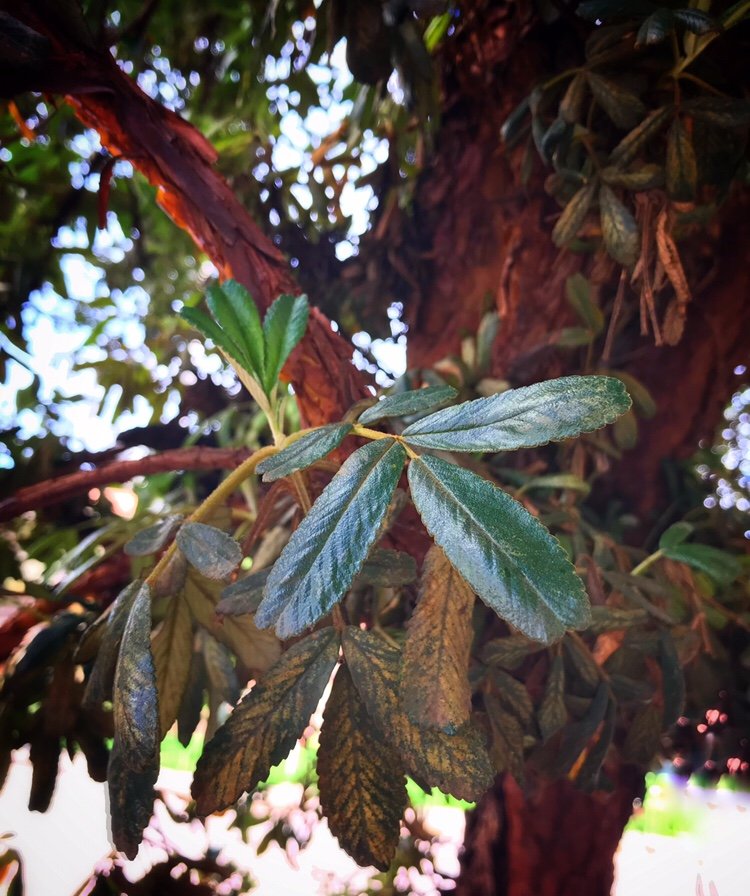
Far too often nowadays, massive developments look more like a rape of the natural environment. To me, they are never as pretty as pure nature was before the development. However, I found the massive ancient developments to be just as stunning as nature. Perhaps because it wasn’t a destruction of what was there before but rather a rearrangement, a partnership with the environment. A way to harness some of its power to maintain year-round stability and sustainable food for their nation.
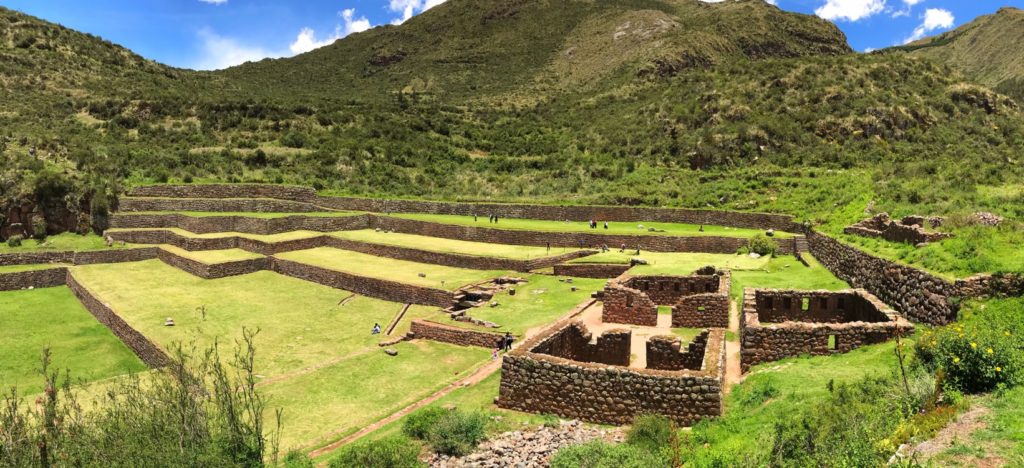
The Dark Side – Fear
As with every society and culture, there is a dark side to the Inca culture. They worshiped nature that they so skillfully had dominion of. This worship was wrought with fear. They revered Sol, their sun god, above all others. They feared the pantheon of the gods they worshiped and gave sacrifices to appease them. Even today this persists (check out our story of La Paz and modern sacrifices). While on the Santa Cruz trek, we had rum shots with our guides one evening in the cook tent. The first shot our guide poured out onto the ground to honor Pachamama, the god of the mountains.

Human Sacrifice
Many of these ancient cultures including the Incas sacrificed young children in an attempt to appease their gods. Choosing the most beautiful young child, often a beautiful young girl, they would make her drunk take her high into the mountains. There they would either kill her or leave her to die in the elements of the high altitude mountains7.

History is rife with good and bad. If only we could glean the good and learn from the bad. No society was built without some massive wrongdoing in their past. Indeed the murder of children is a monstrosity. We must forgive and move forward. Understand it, study it and don’t repeat it, but no one can change the past. Take the good and precipitate it. Strive to always move forward and be proud of the good. The indigenous population here are proud of their roots and it is beautiful. I love to see a homeland that, despite its past, is able to move beyond the wrongdoings and celebrate the good.
Demise
I sometimes wonder how different the world would be today if the Spaniards hadn’t conquered the Incan Empire. If only the Incas were not weakened by diseases such as smallpox and typhoid brought along by the Spanish arrival. Or what if the sons of Huayna Capac, the third Sapa of the Inca Empire, got along better, perhaps they may have had a fighting chance?
But then there is an end to everything no matter the height of greatness. After all, isn’t that a primary law of science? That all things tend toward disorder? Lest we grow too arrogant about our own advancement, we need only to study history to remind us of the truth that life is as a vapor.
Much of the history of this advanced society is lost. We are left with lore and marvel.

Do you believe the Incas planted water? Have you visited Inca ancient ruins? What are your impressions of the ancient cultures?
1Ancient History Encyclopedia
2National Geographics3Cultivation Genius of the Incas
4Wikipedia: History of the Incas
5Science Frontiers
6Smithsonian
7Wikipedia: Child sacrifice in pre-Colombian cultures
8Ancient-Origins


Very interesting blog. Definitely gets one thinking. Oh the things that we can gleam from other people if only we would take the time to do so.
I know. The more I learn the more mystery I find.
The picture of the woman in Pisac was beautiful. Thought provoking blog.
I loved the character in her face. She was sitting across from us at the market while we were eating lunch. I thought she was beautiful.